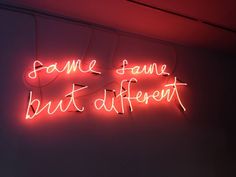At first glance, it seems that the roles of monitor engineer and yoga teacher have nothing at all in common, yet the more I do of both, the more I realise just how alike they are. Clearly the technical knowledge is vastly different – being good at recognising audio frequencies isn’t much use in class, any more than being able to safely teach headstand gets me far on a gig – but the ‘soft skills’ that monitor engineers routinely employ are very much in evidence on the mat. Anyone who makes their living stage left will tell you that it’s at least as much psychology as technology, and the skills I’ve honed in 20 years of music also serve me beautifully when I teach.
Trust
Musicians and students alike are putting their trust in me when they step onto stage or the yoga mat, so it’s vital to greet them with a sense of calm, quiet confidence. Appearing anxious or disorganised behind the desk will put artists into a spin; they’ll instantly feel unsafe, and it’s very hard to come back from that. Equally, no-one wants a stressed-out yoga teacher! My students are coming to me for their dose of calm, to find their peaceful place, so I have to be a good advertisement for the practice. In both jobs there are stressful moments – equipment failures, vastly differing levels of yoga experience within a class, or (in both walks of life) challenging characters – but the trick is learning to stay calm in the eye of the storm. Peace is not about being some place where nothing difficult or unpleasant or stressful ever happens; it’s about finding calm and stillness inside, with all of that going on around you.
Finding the Happy Place
In either profession, what am I really doing? I’m creating a comfortable environment for the person I’m working with. On stage that means giving the performer a clear, balanced audio space which delivers all the information and atmosphere they need to forget about the sound and get on with their job of giving the audience a great show. On the mat I’m guiding the student to find ease and comfort within their body, and access a sense of peace and wellbeing within themselves.
Strong Foundations
As an engineer, I’m a minimalist. I’m a firm believer in getting things set up really logically and methodically – never mind fancy plug-ins, get the gain structure right and apply common sense and you’re 90% of the way there. Sure, use the toys if there’s a need for them, but always know why you’re doing it. Likewise teaching yoga – establishing strong postural alignment foundations to support the body is critical to a beneficial practice, and I don’t lead someone through deeper meditative or breathing practices until we’ve spent plenty of time with the basics.
Communicating, listening, interpreting
Whichever hat I’m wearing, I’m there to serve artist or student. That means establishing clear, open communication between us; delivering the mix or practice which applies to them, rather than what I would like; and interpreting what they mean when they say something sounds ‘clunky’ or feels ‘stuck’, and so figuring out how best to help them.
Take it seriously without being serious
I take both my jobs very seriously – which is not the same as being a terribly serious person whilst I’m doing them. I love silly banter when we’re setting up a show, and I think it’s a wonderfully bonding human moment when we laugh together during a class. When intense concentration is called for, of course I honour that – but I don’t believe that a little humour and levity at the appropriate time ever did a person anything but good! (Note: apologies to all those who are on the receiving end of my appalling jokes, but you did know what you were getting when you booked me. Well, the second time, anyway….)
So as diverse as my jobs might be, scratch the surface and really they’re not that different at all.
What about you? However you spend your time – what do you REALLY do?
